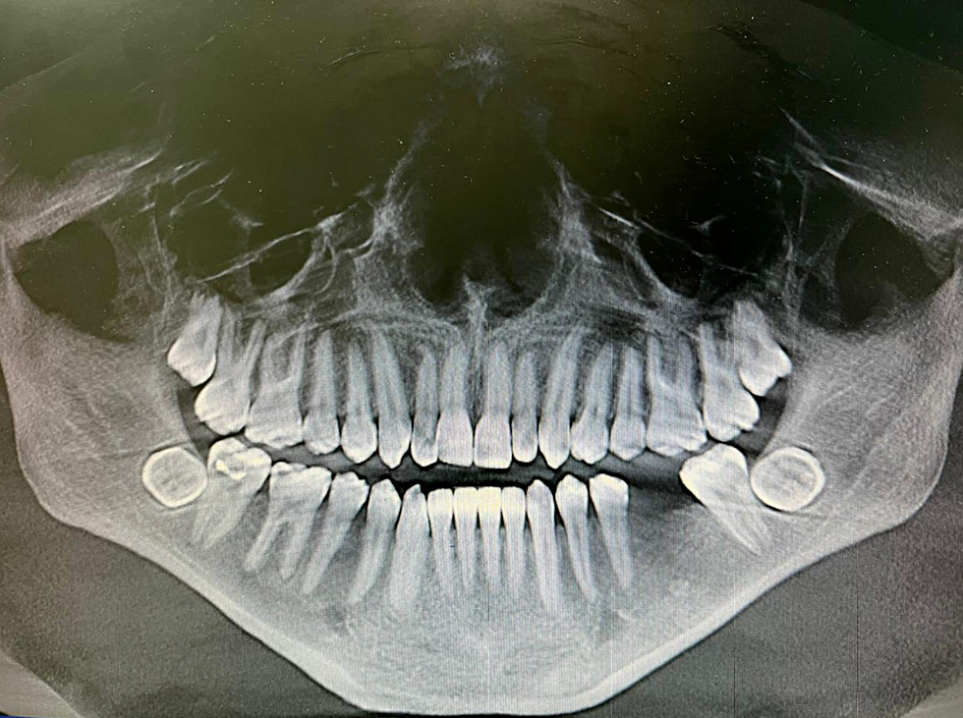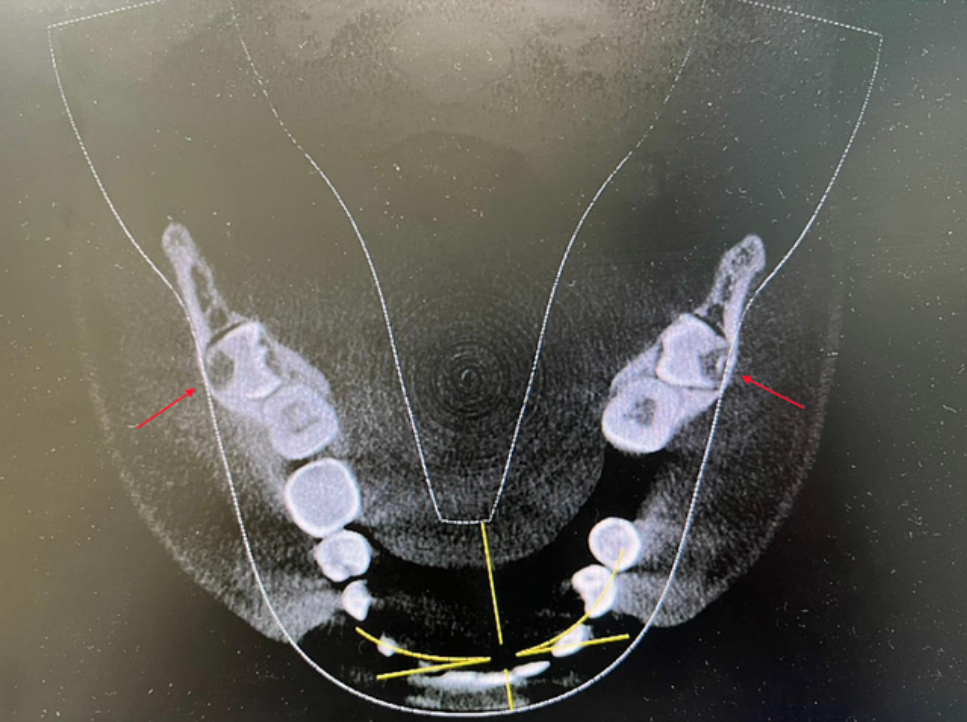An interesting article titled “Impacted Third Molars, A Rare Occurrence of Identical Bilateral Impacted Mandibular Third Molars in Linguo-Buccal Location: A Case Report” written by Shaul Hameed Kolarkodi and et al. appears in Cureus (vol. 13, no. 12, e20858). The article describes the case of a 20 year old man who had bilateral horizontally impacted lower wisdom teeth which found on a panoramic radiograph and also later confirmed with cone beam computed tomography (CBCT) imaging.
In the article the authors described how impacted wisdom teeth are when they cannot erupt into the proper position. They mention how doctors encounter many types of impaction of wisdom teeth teeth and mention how having horizontally impacted lower wisdom teeth on both sides is rare. Impacted wisdom teeth can happen due to a lack of space or a pathological change that can disrupt the eruption process. In many cases impacted widsom teeth are not found because they don’t cause symptoms.
In the case report disscused in the article, the authors discuss how during the 20 year old man’s dental visit the impacted wisdom teeth were found using a panoramic x-ray. The impacted wisdom teeth were noted as transversing in a lingo-buccal direction. The man then consent to having a cone-beam computed tomography (CBCT) scan which confirmed the wisdom teeth were positioned in a linguobuccal direction on both sides, with thinning on the lingual cortical plates. The authors said that no pathological findings were associated but they did observe that the roots of the impacted wisdom teeth was not completely formed and there was idiopathic osteosclerosis.

The patient was then informed of the treatment options and decided to have his impacted wisdom teeth extracted, which was what was suggested to the man. He was sent to an oral and maxillofacial surgical center for the procedure.

The authors state:
“two treatmet options….were follow-up asymptomatic impaction or surgical extraction of all impacted teeth….we highly recommend surgical removal of both impacted teeth…in order to avoid late complications.”
While discussing the case the authors noted that an impacted wisdom tooth as they observed in this case is rare – one that is a symmetrical linguoverted impacted bilateral lower wisdom tooth, with a a horizontal impaction that orients in the buccolingual direction with crown overlap root. The authors mentioned how in this case the crowns of the teeth face the lingual cortical plate and the roots toward the buccal cortical plate. They feel that these impacted teeth can harbor bacteria which can lead to infelection and the development of pericoronitis or odontogenic cyst. Furthermore, the authors were concerned that complications from the wisdom teeth removal increase with age based on a study they have reviewed. This study suggested that if wisdom teeth are to be extracted, it is done before 25 years old, particularly for woman, as they had significantly more problems with alveolitis, infections, and paresthesia than men. Thus, the authors felt that the 20 year old man having these wisdom teeth extracted was the best treatment option.
